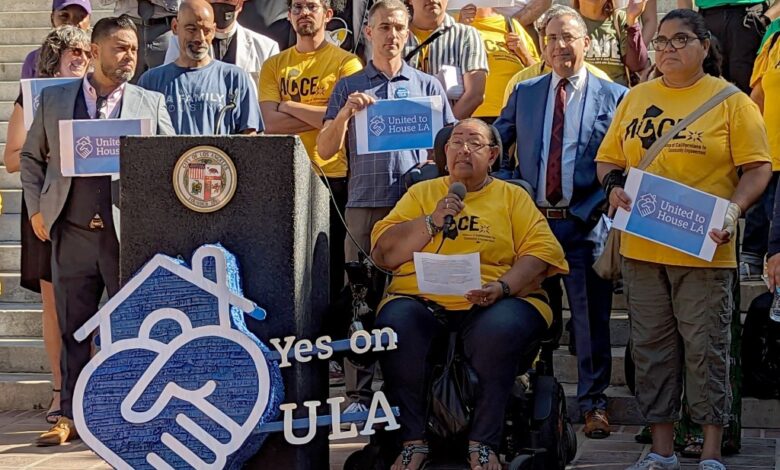Is Measure ULA living up to its promises? – Daily News


The city of Los Angeles’ punitive real estate transfer tax on high value properties, approved in 2022, is now producing results—but they are less than stellar. The tax, which tops out at 5.5% on the resale value of properties selling for more than $10 million (with annual inflation adjustments), is generating less revenue than expected while impacting the city’s weak commercial real estate market. Since little of the tax proceeds have been spent, the jury is still out on whether the measure will effectively improve housing security.
The ballot summary for Measure ULA promised that the tax would generate “approximately $600 million – $1.1 billion annually.” Voters approved the measure by a 58-42 margin, and the city began collecting the tax on April 1, 2023.
The first complete fiscal year of Measure ULA tax collections ended on June 30, 2024. Total revenue from the transfer tax amounted to just $296.7 million, less than half of the lower bound of the revenue range promised to voters.
Although billed as a mansion tax, the ULA transfer levies are having the biggest impact on commercial real estate rather than on high-value single owner homes. The two biggest tax payments in FY 2024 were paid on apartment building sales. In April 2024, the 575-unit complex known as 888 at Grand Hope Park sold for $186 million, yielding the city $10.2 million in transfer tax revenues. The following month, the 214-unit Reveal Playa Vista changed hands for $122 million yielding $6.7 million in taxes.
While these are luxury rental buildings, their units are individually worth well below the $5 million threshold that triggers Measure ULA taxation. So, the tax is inadvertently raising the cost of renting apartments to upper middle-class tenants.
Aside from rental apartment complexes, large office buildings, hotels and shopping centers are potentially subject to the tax. But because the value of office, lodging, and retail properties collapsed in the wake of COVID-19, sales activity has been muted. Further, imposition of the tax is likely deterring sales. The Los Angeles Times recently observed that “the tax has contributed to a nearly 40% year-over-year drop in sales of office, retail, industrial and multifamily properties.”
One office building recently forced onto the market was the Gas Company Tower at 555 West 5th Street. The owner was delinquent on $465 million in mortgage debt which it had incurred based on a $632 million valuation in 2021. After appraisers slashed that valuation by more than two-thirds, the property was finally sold this month for just $200 million, wiping out many investors holding portions of the securitized mortgage loan.
While the $200 million resale price would have yielded a disappointing tax take for the city, the final results are even worse. Because the Gas Company Tower was purchased by Los Angeles County, no transfer tax will be due. And since the County is exempt from property tax, the Tower will be removed from the tax roll, depriving the city of annual property tax revenues. Los Angeles Unified School District, which also shares in the ad valorem tax, will take an even bigger hit.
The city has gotten off to a slow start spending the smaller-than-expected Measure ULA windfall. One deterrent may have been litigation from the Howard Jarvis Taxpayers Association, but this suit was dismissed in October 2023. If HJTA had prevailed, ULA tax proceeds would have had to be returned and any amounts spent would have been taken from the city’s general fund.
Between the tax’s implementation in April 2023 and early December 2024, it raised $480 million of which the city had spent $45 million. The controller’s checkbook shows that most of the ULA money spent thus far, $35 million, went to the Southern California Housing Rights Center which provides tenant representation.
According to its most recent IRS Form 990 (for the year ending June 2023), the Center had $8.5 million in revenue and paid their Executive Director Chancela Al-Mansour $217,398. It remains to be seen whether Al-Mansour and other Center executives bulk up their compensation now that the organization is spending so much Los Angeles taxpayer money.
Now that the City Council has authorized a $166 million spending plan for ULA funds, expenditures will ramp up toward the end of FY 2025. We can only hope that the city will get better results than it has with previous homeless and housing funds.
Marc Joffe is a fellow at the California Policy Center




